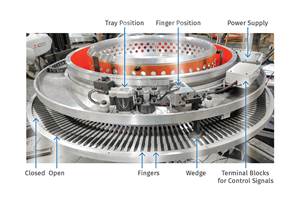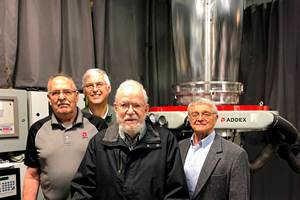Keep Your Screen Changer In the Flow
The screen changer plays an essential role in generating quality extrudate. Here’s what you need to know to keep it functioning properly.
There are many different designs of screen changers on the market today, from manual slide plates to constant-pressure and continuous backflush or scrapper designs, and each one comes with its own set of strengths and weaknesses. As a processor, you need to know these in order to make the best choice of screen changer for your particular application.
This article will focus more on general process troubleshooting as opposed to machine-specific issues, but it’s important to note that a large percentage of problems that extrusion processors have with their screen changers occur because the screen changer they’re using is not the best design for their application. Each specific extrusion filtration application should be closely examined prior to specifying a screen changer for the project.
FILTRATION MESH
Every processor wants the best filtration they can get for the area of filtration they have. Very few, however, utilize a screen-pack configuration fully optimized for their process. Take as an example a situation in which an operator is attempting to extend a production run between screen changes. As the screen becomes occluded, head pressure rises and eventually causes the wire cloth to fail. A simple operator solution is to pile on additional 20-mesh screens for increased strength.
A better solution would be to increase the support strength of the base screen, using a heavier-gauge 10-mesh screen layered with a single 20-mesh screen. The 10- and 20- mesh screens will support each other by working at two levels. The end result is the ability to run longer between changes, but without the unnecessarily high pressure drop and resulting increase in shear heat. Any increase in pressure-induced shear is best avoided, since this will generate higher melt temperature at the discharge end of the extruder, creating a higher demand on downstream cooling capacity and potentially reducing output.
Most screen-changer suppliers offer process-support services that include pressure-drop calculations. These are simple to perform and factor in material viscosities, breaker-plate open area, and screen open area to arrive at the best screen-pack configuration for the process and operating environment. This service is normally a free and simple means to optimize polymer flow performance.
TEMPERATURE CONTROL
Another issue occasionally attributed to screen changers is temperature fluctuation. Best practice is to stay alert to gauges, heaters, and heater circuits. Monitoring these on the screen changer may not be as critical as checking the extruder and feed screw, but it can help spot an issue before it becomes catastrophic.
Another tip is to optimize the number of heat zones necessary to balance temperature across the screen changer. More specifically:
• Hydraulic slide-plate screen changers are best served by three zones—a body zone and independent zones for the each end of the slide plate. Many processors wire these machines into a single control zone, resulting in too much or too little heat to the slide plate. This can destabilize the melt profile and cause material burning in the off-line breaker plate.
• Continuous bolt-type screen changers are normally best served by a single control zone, but as these machines increase in size, additional body zones help balance the heat. Bolt-type continuous screen changers heat the bolts by conduction from the body. If heat is unbalanced, the body can shrink onto the bolt and generate high enough clamping forces to prevent movement of the bolt.
• Machine adapters are also normally best served with independent heat control. This, however, will vary with size.
PRESSURE FLUCTUATION
Streamlining the polymer flow through the screen changer will also affect process stability. For sensitive materials or those with unique flow characteristics, CFD (computational fluid dynamics) modeling software can be utilized to optimize screen-changer flow passages and minimize material residence time. Along this line, adapter length, steps and transitions, and polymer inventory between the screw tip and screen pack can be critical to establishing best flow while minimizing polymer degradation points and thermal stratification.
Vent cycles on continuous screen changers can influence pressure stability. Most bolt-type screen changers can see up to 50% of the available filter area removed from the process for screen change. While this naturally causes a rise in head pressure, the flow rate and die pressure normally remain relatively stable. The issue arises with the reintroduction of the clean screen. Vents machined into the bolts divert a small portion of the polymer melt to prefill and purge air from the incoming screen pocket. The resulting slight drop in die pressure can be minimized by operator finesse or more precisely by PLC control. Constant-pressure screen changers, such as rotary wheel designs, are not normally subject to these issues. One auxiliary that can help tremendously with fluctuating pressure is a gear pump, which can tolerate upstream pressure swings while holding the die pressure stable.
LEAKAGE
Leakage is a problem with almost all screen changer designs as they age, but most noticeably with slide-plate models. This type of screen changer relies on manually adjusted or pressure-activated seals and is subject to wear and tear from the movement of the slide plate, degradation of the seal-pressure ring, and damage from dislodged screens. Seal maintenance for these machines can be required as often as weekly to once a year. Maintenance can lead to teardown and reassembly, which can be a time-consuming, expensive process. Even before it reaches this point, the housekeeping required to keep the slide plate clean and prevent polymer from leaking onto wiring and other equipment is significant.
One way to minimize leakage on a system like this is to increase the head pressure. Your intuition might tell you lower pressure would be better because it would put less strain on the system. However, because the seals are designed to respond to pressure in the extruder, they are only working at their peak when the pressure is higher. At a lower pressure, the seals will relax slightly. When the extruder is idle or running at drool speed and there is very little pressure being exerted on the seal, it becomes easy for lower viscosity material to leak out. One newer slide-plate seal, an all-steel, segmented pressure-ring design, addresses these problems and caries a lifetime leak-free warranty regardless of temperature and low viscosity, making this seal the first to operate leak-free on high-temperature coating applications.
Material leakage on bolt-type or other close-tolerance rotary wheel machines that operate without a mechanical seal can likewise occur over time; but with these designs, leakage is almost always caused by mechanical damage. These precision-machined screen changers are typically designed for a fairly narrow material viscosity range.
As such, you should not apply a machine designed with clearances for high pressure and high viscosity to a low-viscosity process without approval or modification from the supplier.
RESIN CONTAMINATION, DEGRADATION
The primary purpose of a screen changer is to filter out contaminants from the melt stream; but the fact is, screen changes almost inevitably introduce contaminants, some of which get into the die. These result from imperfect cleaning of the slide plate, bolt, or wheel. For example:
• This can occur on a slide-plate screen changer as the upstream and downstream seals scrape material residue into both sides of the oncoming screen pocket. Upstream contaminants are caught on the screen. Downstream contaminants flush out into the die.
• A continuous or constant-pressure screen changer can experience this as well, but to a much smaller degree. The gap between the bolt or wheel and housing is measured in microns on the downstream side. The rare contaminant that makes it through this clearance to enter the melt flow is only consequential to the most demanding of applications, and for these few occasions, secondary, long-life canister filters will catch anything that comes through.
Many processes do not have to run continuously or require 100% quality and can overlook contaminants during screen change. However, if your customer has zero tolerance, you’ll need a different kind of screen changer. There is no way to continue using a slide-plate screen changer without introducing some level of contaminants or material degradation from the offline breaker plate. To solve this, a continuous bolt-type or rotary-wheel screen changer is a better solution.
LOCK-UP
Continuous screen changers that use no mechanical seal utilize precisely machined clearances to effect a polymer seal. These same clearances provide lubrication between the bolts or wheel and housing and must be maintained to avoid locking up the machines. Lock-up (jammed bolt or wheel) can be a result of various things, usually preventable with correct operator usage. The leading cause of lock-ups occurs when the bolts or wheel are not cleaned and lubricated regularly.
Many processors with a bolt-type or rotary-wheel screen changer have bought these continuous-process machines because they have no mechanical seals and run reliably and leak-free for years on end. While these advanced designs certainly require less upkeep than a slide plate, maintenance during screen change should not be neglected.
Over time, excess buildup of polymer can plate onto the bolt or wheel surfaces, reducing required clearances and eventually requiring more hydraulic pressure to shift than is available from the power unit or mechanical drive.
This stuck bolt or wheel is easily preventable with regular cleaning. A lock-up requires a shutdown and reheat process that can take up to 8 hr or more. Doing daily maintenance and cleaning of the piston takes 5 to 10 min and can save a considerable amount of downtime. “The biggest issue is getting into the mindset of cleaning the whole bolt,” says Marty Danco of Verity Resins, a recycler and compounder based in Forest City, N.C. “When you lock it up, there’s no way home, it’s locked up for good. Using proper copper gauze, the bolt should be cleaned every day—not just the top, but underneath it and on the sides.”
The necessity of regular maintenance also holds for breaker plates. Over time, material will carbonize on them, closing off the holes, which raises head pressure and eventually compromises output. Breaker-plate clogging is also easily preventable. The best solution is to make sure to have a clean spare. Swapping these breaker plates out even once a week is great preventive maintenance to ensure it never reaches the point where the process or the final product is impacted.
Most leading screen-changer suppliers are excellent resources to refer your troubleshooting issues to. Doing so, instead of relying solely on your maintenance crew, can often reduce your downtime and repair expenses, eliminate some problems before they occur, and potentially point you to a better process solution than the machine currently in service.
Related Content
Pregis Performance Flexibles: In the ‘Wow’ Business
Pregis went big and bold with investment in a brand-new, state-of-the-art plant and spent big on expanding an existing facility. High-tech lines, well-known leadership and a commitment to sustainability are bringing the “wow” factor to blown film.
Read MoreNew Blown-Film Cooling Technologies Set to Debut at NPE2024
Cooling specialist Addex to roll out new auto-profiling air ring for rotating dies, and new single-plenum air ring.
Read MoreBreaking the Barrier: An Emerging Force in 9-Layer Film Packaging
Hamilton Plastics taps into its 30-plus years of know-how in high-barrier films by bringing novel, custom-engineered, nine-layer structures resulting from the investment in two new lines.
Read MoreAir Ring Add-On Brings Output to New Level
The Short Stack from Addex sits between the air ring and die and provides high-velocity air flow to boost output and lock in the bubble.
Read MoreRead Next
Why (and What) You Need to Dry
Other than polyolefins, almost every other polymer exhibits some level of polarity and therefore can absorb a certain amount of moisture from the atmosphere. Here’s a look at some of these materials, and what needs to be done to dry them.
Read MoreLead the Conversation, Change the Conversation
Coverage of single-use plastics can be both misleading and demoralizing. Here are 10 tips for changing the perception of the plastics industry at your company and in your community.
Read More
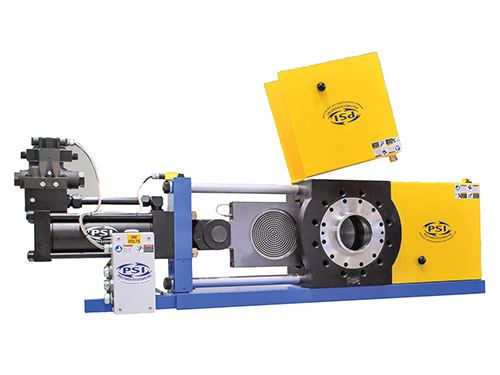

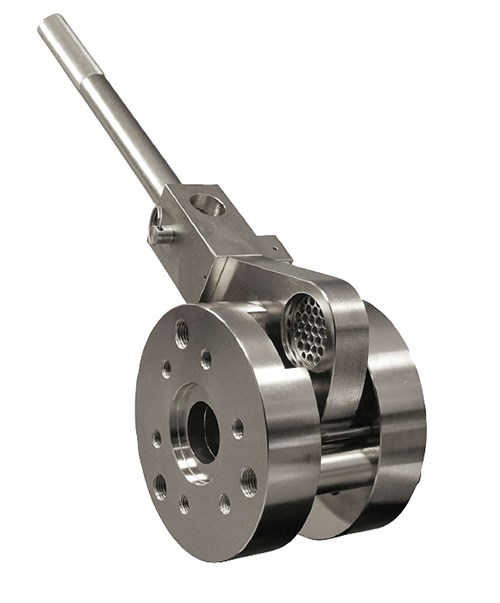
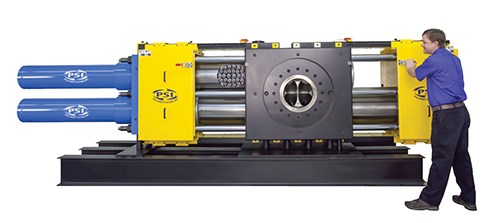













.png;maxWidth=300;quality=90)








